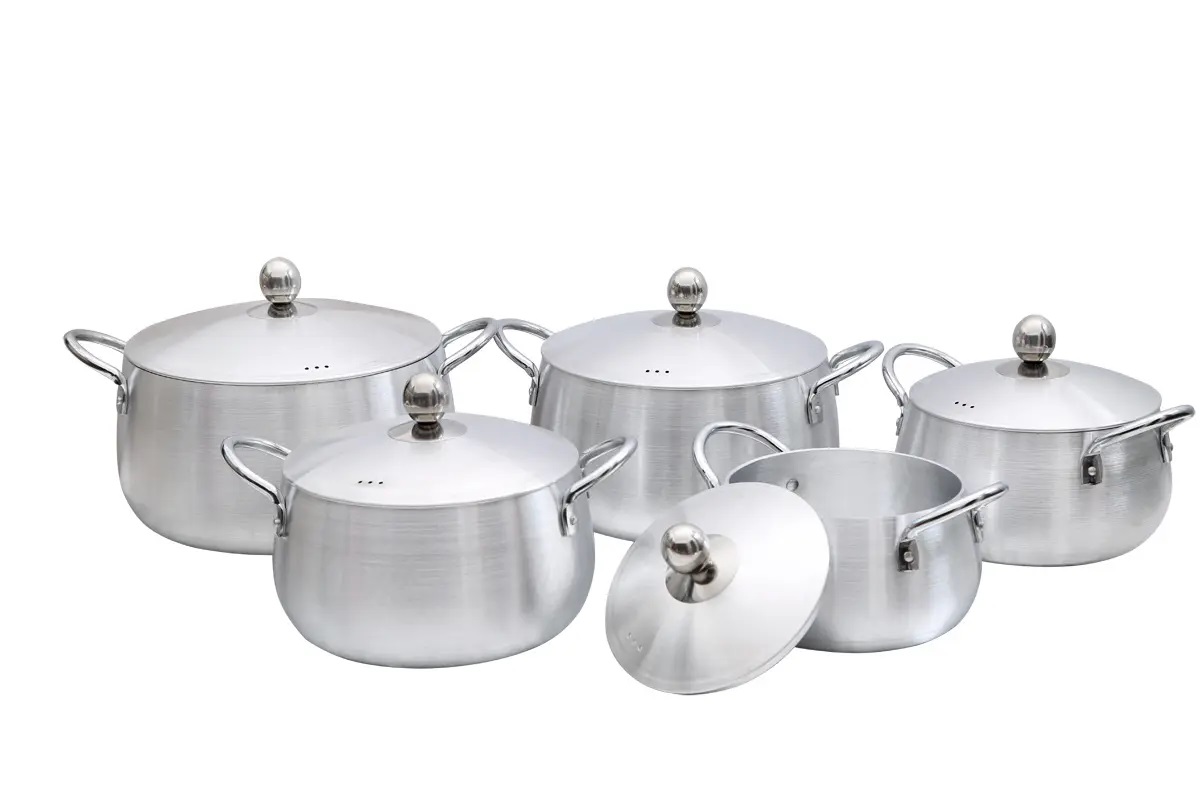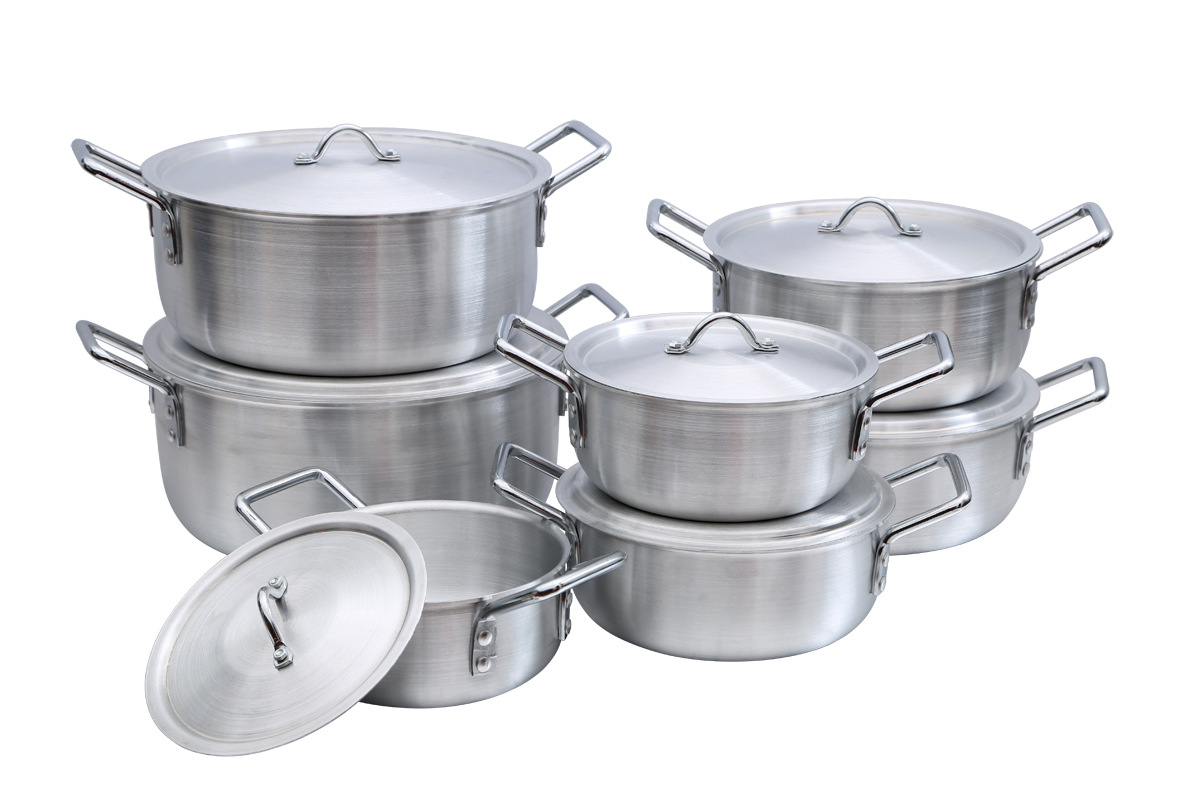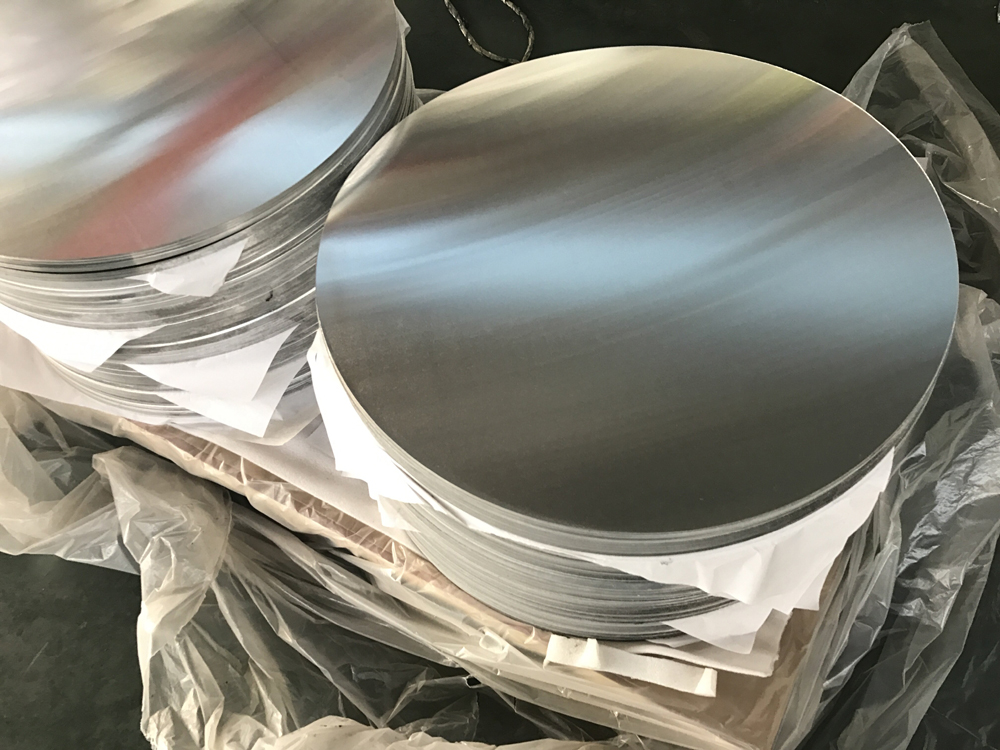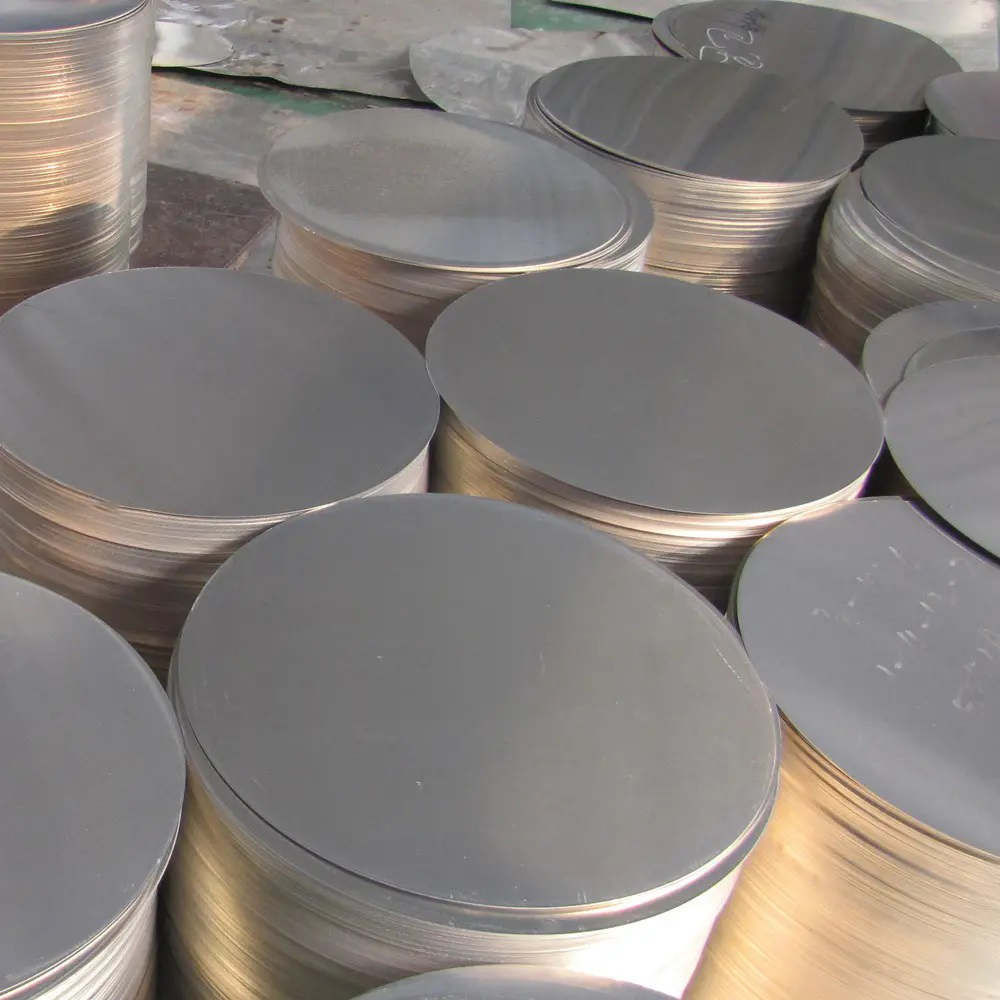The lightness and excellent thermal conductivity of aluminum alloy make it a high-quality material for making cookware, especially suitable for cooking environments that require rapid heating and uniform heat distribution, such as outdoor cooking or home use. Aluminum alloys such as 1050, 1060, and 3003 are usually used . It is an excellent choice for manufacturing cookware due to its thermal conductivity, lightweight durability, food safety, ease of processing and cost-effectiveness.




Specifications of aluminum discs for cookware:
Alloy | 1050, 1060, 1070, 1100, 3003, 3004, 3105, 3A21, 5005, 5052, 5083, 5182, etc. |
Temper | O, H12, H14, H18, H24, H32, etc. |
Thickness | 0.2mm-10mm (or customized according to customer requirements) |
Width | 50mm-1600mm (or customized according to customer requirements) |
Process | hot rolling (DC) or cold rolling (CC) |
Surface Treatment | Polished |
Surface | Hairline, Oxidation, Mirror, Embossed, etc |
Appearance | The surface is smooth and clean, without scratches, whole parts, oil stains or oxidation; the cutting edge has no burrs. |
Package | seaworthy wooden pallet, wooden box, aluminum crate |
Usage | Suitable for aluminum cookware, pots, pans, frying pans, rice cookers non-stick, pressure cooker soup pots, pizza trays, kettles, fryers, baking sheets, traffic signs, light reflectors, etc. |
Characteristics of aluminum discs for cookware:
1. High thermal conductivity: Aluminum can dissipate heat evenly and quickly. This ensures food cooks evenly and prevents burning or overheating.
2. Lightweight: Aluminum is lightweight compared to other metals used in cookware manufacturing, such as cast iron or stainless steel. This makes aluminum cookware easy to handle and operate, especially for tasks that require frequent stirring or turning.
3. Safety and hygiene: It is safe for food contact and will not release harmful substances into food during the cooking process, ensuring the safety of the final dish.
4. Corrosion resistance: Aluminum disc 1050 has good corrosion resistance, which is very important for cookware exposed to moisture, acid and other food ingredients. Proper care and maintenance can further extend its lifespan.
5. Excellent formability: Aluminum is highly formable, allowing manufacturers to shape it into a variety of cookware designs, including pots, pans and trays. This versatility enables the production of cookware in different sizes, shapes and functions to meet consumer needs.
6. Affordable: Aluminum is low-cost compared to other materials used in cookware production, and its relatively low cost makes it an attractive option for both manufacturers and consumers.
